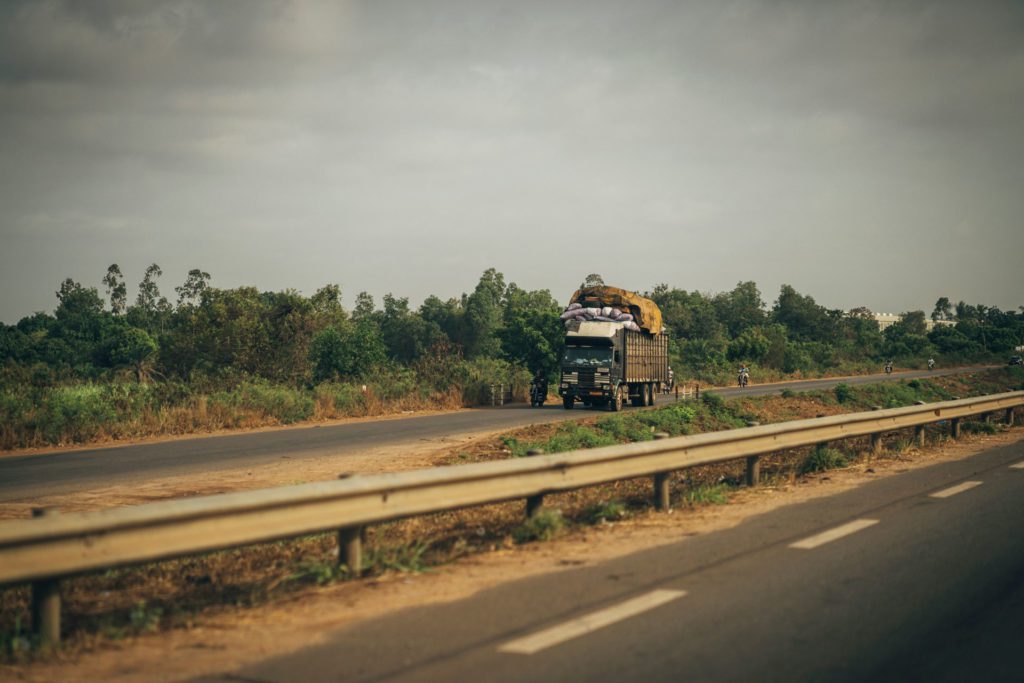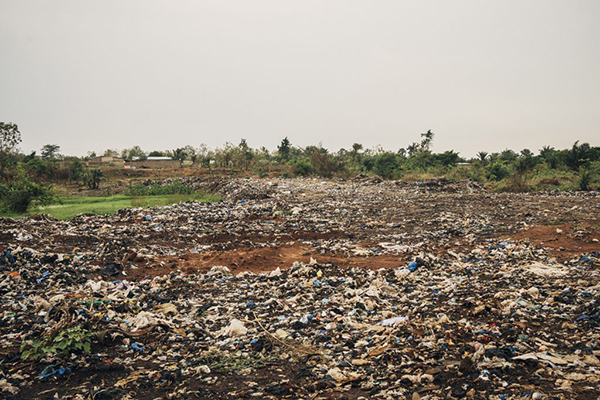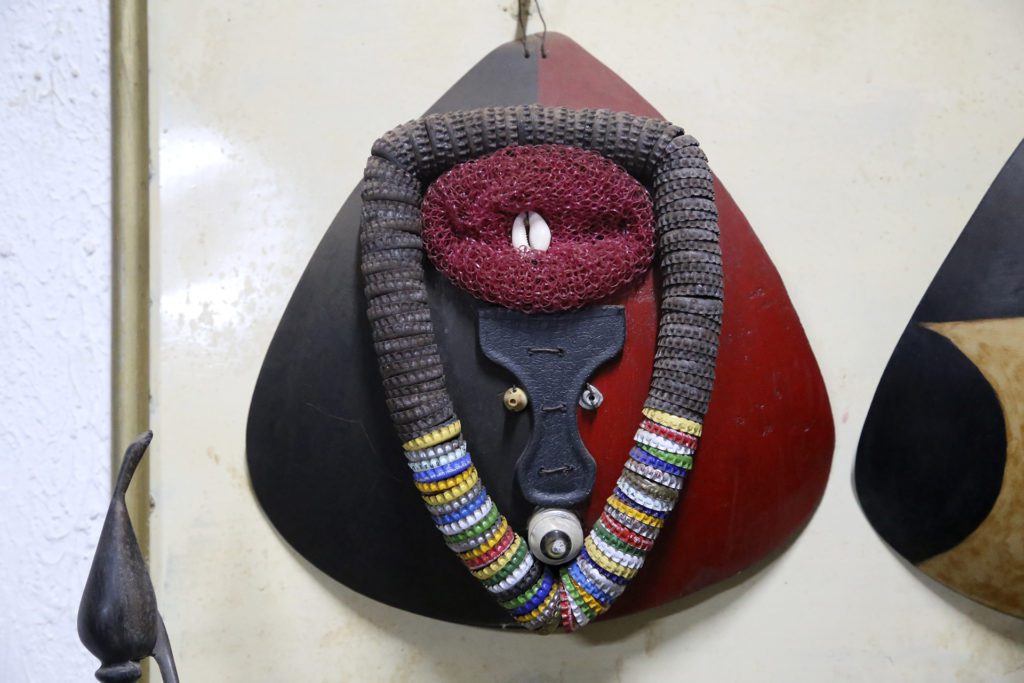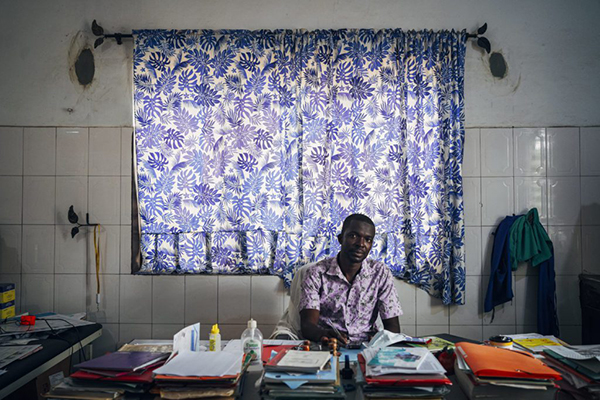There are wars and armed conflicts in Africa that create humanitarian crises that are forgotten by the world. Somalia, the Democratic Republic of Congo, Ethiopia and the Central African Republic are some examples of how violence stunts the development of millions of people.
*This content is brought to you in partnership with África Mundi.
In July 2009, the radical Islamist group Boko Haram killed 50 people at a police station in the northern state of Bauchi in north-eastern Nigeria. The group’s first attack would shut off one of the countries hardest hit by humanitarian crises. That same year, hundreds of kilometres to the east, the departure of Ethiopian forces from Somalia pushed the southern part of the country into the hands of another terrorist group: Al-Shabab.
The Horn of Africa country now has more than 3.8 million forcibly displaced people. Somalia and Nigeria are two of the nine African countries with more than a million refugees or internally displaced persons in 2020. According to figures from the United Nations High Commissioner for Refugees (UNHCR). A 2021 report by the same organisation noted that the largest number of displacements in the world in recent years are in the Democratic Republic of Congo and Ethiopia. These migratory episodes have been shaped by growing regional conflicts, terrorism, political interests and corruption, among other factors.
War and humanitarian crises from the heart of Africa
Since 1996, more than five million people have died or disappeared in the eastern Democratic Republic of Congo. Rich in natural resources, the country has been the scene of the deadliest conflict since World War II. Following a Belgian colonial past and the subsequent meddling of several African countries such as Rwanda, Uganda, Zambia, Sudan and Libya in the conflict, the Democratic Republic of Congo is still suffering the consequences of what is considered the “African world war”. Over the past 26 years, 6 million people have fled their homes to escape multifaceted conflicts, making it the longest-running and most extensive humanitarian crisis in Africa.
Beyond the various conflicts, there are two specific events that have aggravated the humanitarian situation in the DRC. One is the eruption of the Mount Nyiragongo volcano outside the city of Goma, which left some 300,000 people displaced, 31 dead and half a million people without access to drinking water. The other is the constant resurgence of Ebola. This country has suffered 13 outbreaks, the latest in October 2021. The most serious was the tenth Ebola epidemic of 2018-2020 that left around 3,470 infected, 2,280 of whom died, a 65% mortality rate.
Cameroon and Central African Republic: when language and religion are at the heart of the conflict
Sixteen hundred kilometres apart, the roots of the conflict are grounded in a linguistic issue. In 2016, the mainly French-speaking government of Cameroon decided to expand the use of French in courts and schools in the mainly English-speaking regions. A decision that emboldened the civil insurrection with secessionist aspirations and resulting, on 1 October 2017, with the proclamation of independence by Ambazonia, an unrecognised breakaway state that claims the English-speaking parts of the country as its own territory. Pro-independence forces took control of the north-western and south-western regions of the country, depriving thousands of children of education and closing their schools for four consecutive years. As of 2019, the veto on education affected around 600,000 children, with more than 80% of schools closed and at least 74 schools destroyed in the conflict zones, according to figures from UNICEF.
Likewise, the country is also affected on its northern border with Nigeria by the presence of the Islamist militia Boko Haram. Some 1.13 million Cameroonians have been forced to migrate in search of political stability, access to basic rights and a prosperous future.
In the Central African Republic, on the other hand, religion is at the heart of dissent between government forces, Muslim armed groups and Christian insurgents. The country has experienced decades of instability and violence since gaining independence in 1960. In 2012, Muslim fighters from the Séléka group launched an offensive against the central government and coalitions of Christian fighters known as the Anti-balaka responded with violent retaliation against the Muslim group. The attacks and counterattacks have plunged CAR into a protracted humanitarian crisis. Thousands of people have been killed since the renewed outbreak of conflict in 2013 and more than 600,000 have been displaced, most of them refugees in conflict-ridden neighbouring countries such as Cameroon and the Democratic Republic of Congo.
The Horn of Africa, where famine meets drought
There is one country in particular that has known no peace. South Sudan has been in a state of ongoing turmoil since its independence in 2011. Ethnic and political strife between the president, Salva Kiir, an ethnic Dinka majority, and his vice-president, Riek Machar, an ethnic Nuer, has displaced nearly 3.8 million people from their homes. In 2013, a faction of the Sudan People’s Liberation Army (SPLA/M) attempted a coup to oust President Kiir from power. The attempt failed, yet civilian forces continued to fight, and the conflict dragged on until 2018. In that period, the SPLA/M took control of the oil epicentre town of Bentiu, Bor and other oil-rich areas.
This is compounded by the country’s geographical dependence on Sudan because of its landlocked status. Dependence implies that international negotiations for South Sudan’s oil fields, on which part of its economy is based, will be tied to unpaid labour and high inflationary prices. In this case, natural resources have led an economic tug-of-war that theoretically should have ended in 2018 following peace agreements between the South Sudanese government and UN peacekeepers on the one hand, and the SPLA/M supported by the South Sudan Liberation Movement on the other. Yet more than half of the population still has difficulty accessing basic food today, and the country has become one of the countries in the world with the worst access to health care.
The military power of Sudan
In the country’s neighbour to the north, Sudan, military power is key to understanding Sudanese politics and the tumultuous years of instability that have led to another of the region’s most serious humanitarian crises. A history of coups d’état and the Islamic fundamentalism of dictator Omar al-Bashir have left 14.3 million Sudanese in need of humanitarian assistance as of December 2021, and almost 3.5 million internally displaced persons or refugees.
In power since 1993, protests against Omar al-Bashir only grew in 2018, leading to an army-staged coup to seize power months later. Since then, the military junta has continued to control of the nation despite attempts by civilian power over local politics. The most recent example was the military coup d’état in October 2021 that ended the transitional government of Abdullah Hamdok.
The Tigray war in Ethiopia
Despite all these conflicts, the most damaging one is the Tigray war in Ethiopia. The armed conflict, ongoing since November 2020, pits rebels in the northern Tigray region against the federal government. After breaking out 16 months ago, the war has killed around 900,000 people and left more than 5 million Ethiopians food insecure. The source of the conflict is rooted in differences between the Tigray, who have held decision-making positions in the national government for decades, and the first president from outside their party, Abiy Ahmed, an ethnic Oromo. Local elections in the Tigray region, which were held in the middle of the pandemic and declared illegal by Ethiopian President Abiy Ahmed, further inflamed the conflict. There are some 1.7 million internally displaced persons (IDPs) in the Tigray region.
In the east, Somalia has been embroiled in one conflict after another since 1991. The fall of Siad Barre’s communist dictatorship on 26 January 1991 sparked a civil war. Somalia has since been without effective government and has only seen the growth of radical Islamist elements in the south of the country and the creation of independent states that are not recognised by the TFG, such as Somaliland and Puntland. Terrorist disruption has played out in Mogadishu, the country’s capital, with repeated clashes between the radical Islamist Al-Shabab militia and government troops supported by African Union Mission (AMISOM) soldiers.
After 27 years of ongoing conflict, Somalia has seen more than 11 presidents take power and it held the title of the world’s most corrupt country for 10 years–now ranked third–according to the 2021 Corruption Perceptions Index. The country has 3.8 million internally displaced persons who also now live alongside Ethiopian refugees fleeing the conflict in the Tigray region.
In the epicentre of terrorist groups in the Sahel
Since 2009, the war between Nigeria and the terrorist group Boko Haram has continued unabated. After its first attack, the group entered the international media spotlight with the mass abduction of 276 girls aged 12 to 16 from the Chibok school in Borno state. Since then, terrorism has spread throughout the Lake Chad Basin. More than 27,000 people have been killed by Boko Haram and by 2020, around 3 million have fled the conflict and the country.
Despite the restoration of democracy in 1999, Nigeria has been in conflict for 13 years and on several fronts: religious fanaticism, the insurgency in the Niger Delta, Nigerian Shiism and institutional corruption. All of these clashes have one thing in common: the conflict between different ethnic groups and religions. The country is home to more than 500 ethnic groups and some 350 languages are spoken.
The latest nation to join the grim list of more than one million displaced people is Burkina Faso. This state was spared jihadist violence until the popular uprisings in 2015 that toppled President Blaise Campaoré, who was rumoured to have an agreement to harbour groups like Al-Qaeda as long as they did not target the country. It has now become, ahead of Mali, the country in the Sahel region that has been hardest hit by terrorist violence. West African countries have accounted for 47% of attacks and 44% of the victims of global jihadist activity. Unlike Nigeria, the Islamic State of the Sahel and the Group for the Support of Islam and Muslims are the two terrorist groups behind the attacks in Burkina Faso. State-held resource exploitation in Africa’s fourth-largest gold-producing country, growing insecurity and terrorist episodes have led to more than a million displaced people between 2015 and 2020.






